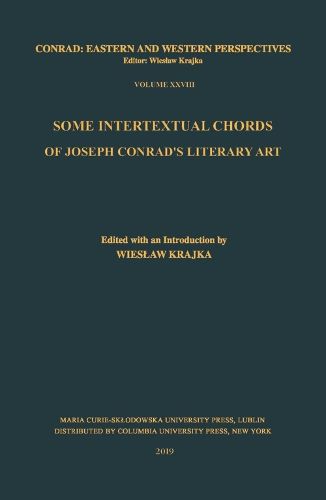Readings Newsletter
Become a Readings Member to make your shopping experience even easier.
Sign in or sign up for free!
You’re not far away from qualifying for FREE standard shipping within Australia
You’ve qualified for FREE standard shipping within Australia
The cart is loading…






This monograph brings together studies that deal with various aspects of Joseph Conrad’s literary art. The core concept organizing its structure is intertextuality. Intertextual relationships are seen in terms of either affinities/points of contact and the influence of earlier literary works upon his oeuvre or the influence of Conrad’s texts upon literary works by authors following him. Each such relationship is understood as a chord that is vibrant and resonates with new meanings that emerge from the juxtaposition of literary works by Conrad with those by other artists; these new meanings add additional value and significance to Conrad’s literary art.
The papers create a truly international constellation of criticism, with their authors affiliated at universities in France, United Kingdom, Turkey, India, Japan, and Poland. The papers apply various types of comparative treatment of Joseph Conrad’s texts: to juxtapose them with literary works by other authors, with specimens of a literary genre, with texts of other fine arts, with aesthetic, philosophical, and ideological tendencies of the epoch. They apply a diverse range of perspectives to Conrad’s literary art, its intertexts, and contexts. The book is a tribute to the literary artistry of Conrad’s literary output, to its tremendous and inexhaustible semantic and artistic potential to be further explored.
$9.00 standard shipping within Australia
FREE standard shipping within Australia for orders over $100.00
Express & International shipping calculated at checkout
This monograph brings together studies that deal with various aspects of Joseph Conrad’s literary art. The core concept organizing its structure is intertextuality. Intertextual relationships are seen in terms of either affinities/points of contact and the influence of earlier literary works upon his oeuvre or the influence of Conrad’s texts upon literary works by authors following him. Each such relationship is understood as a chord that is vibrant and resonates with new meanings that emerge from the juxtaposition of literary works by Conrad with those by other artists; these new meanings add additional value and significance to Conrad’s literary art.
The papers create a truly international constellation of criticism, with their authors affiliated at universities in France, United Kingdom, Turkey, India, Japan, and Poland. The papers apply various types of comparative treatment of Joseph Conrad’s texts: to juxtapose them with literary works by other authors, with specimens of a literary genre, with texts of other fine arts, with aesthetic, philosophical, and ideological tendencies of the epoch. They apply a diverse range of perspectives to Conrad’s literary art, its intertexts, and contexts. The book is a tribute to the literary artistry of Conrad’s literary output, to its tremendous and inexhaustible semantic and artistic potential to be further explored.